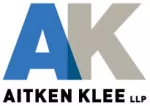In the first PMNOC decision of the year, Justice Furlanetto upheld the validity of claims 1 and 2 of Alexion's patent no. 2,645,810 which is directed to the antibody, eculizumab (SOLIRIS).
Claims 1 and 2 recite the following:
- An antibody that binds C5 comprising a heavy chain consisting of SEQ ID NO:2 and a light chain consisting of SEQ ID NO:4.
- A pharmaceutical composition comprising the antibody of claim 1 and a carrier.
Amgen asserted that claims 1 and 2 were anticipated by example 4 of United States Patent Application No. 2003/023972 and were obvious in view of the state of the art. Justice Furlanetto held that the claims were not invalid for either anticipation or obviousness.
Anticipation
Example 4 of US972 describes the preparation of an antibody (5G1[.1] + peptide) with a TPO mimetic peptide transplanted in place of the native CDR3 of the heavy chain of the 5G1.1 scaffold. The sequence of the 5G1[.1] peptide was set out in Figures 12A and 18B of the patent and had a heavy chain amino acid sequence of SEQ ID NO:67 and the light chain amino acid sequence of SEQ ID NO:69, but does not provide the sequence of the CDR3 or of the original 5G1.1 framework.
The evidence was that SEQ ID NO:69 discloses the same sequence as the light chain of eculizumab (which is SEQ ID NO:4 in the 810 Patent) and that SEQ ID NO:67 discloses a heavy chain sequence that is the same as the heavy chain sequence of eculizumab (SEQ ID NO:2 in the 810 Patent), but for the inclusion of the TPO mimetic peptide instead of the CDR3 of the heavy chain.
Amgen argued that for the sequence of the heavy chain CDR3, one simply needed to look at United States Patent No. 6,355,245, which they argue was incorporated by reference into example 4 of US972, such that US245 and US972 can be considered a single disclosure for the purposes of anticipation.
Justice Furlanetto disagreed that the two patents could be treated as a single disclosure. She commented that "[w]here an incorporation by reference is used, this will depend on what directions are provided in the primary source as to how the incorporated reference is to be used". She noted that the "critical question is what is disclosed to the PSA by reading Example 4 of US972 and the reference in paragraph [0191] to US Application Serial No. 08/487,283" (the application number for US245).
Justice Furlanetto explained that Amgen's expert was using US245 to identify the CDR3 that was removed from 5G1.1 instead of using US245 to identify the 5G1.1 antibody framework which she found was beyond the "teachings and disclosure made by US972" (i.e., the incorporation by reference was to determine the framework not to determine the CDR3 that was removed). She therefore found that the disclosure requirement was not met.
She further determined that, even if she was wrong on this point, the skilled person would not inevitably be led to eculizumab and its sequence by following example 4 of US972.
Obviousness
For its obviousness argument, Amgen asserted that the combination of US245 and US972 or US245 and WO971 rendered claim 1 obvious. They also relied on the amino acid sequence for eculizumab that was deposited with CAS, although unfortunately the CAS sequence included significant errors.
Justice Furlanetto determined that none of the prior art disclosed both the heavy chain and light chain sequences of eculizumab.
Justice Furlanetto found that the skilled person would not have considered US972 to be a reference of particular interest to pursue, in part because it had no clear connection to the clinical drug product then known as eculizumab. Since US245 did not refer to US972, the skilled person would not have combined US972 with US245.
Amgen also argued that the CAS listing was relevant for obviousness. Alexion's expert acknowledged that the skilled person could have made inquiries of CAS regarding the sequence. There was however no evidence that the skilled person would have in fact done this. Justice Furlanetto also found that there was "insufficient evidence" as to the "full amount of work that would have been required to get from the CAS listing (with errors) to the sequences claimed in the 810 Patent". There was also no evidence "to establish that the PSA would have pursued the CAS Listing to obtain a corrected sequence". Justice Furlanetto was clear that an obviousness analysis concerns what the skilled person would have done in light of the state of the art and their common general knowledge and not what the skilled person could have done.
She also found that the skilled person would not have been led to WO971 nor the combination of WO971 and US245. She also was not satisfied that any specific sequence from US 245 would have been obvious to try in combination with the information in WO971.
This decision highlights the importance of explaining why art is being mosaiced for obviousness and that the language used by an expert in explaining what the skilled person would do is important. A copy of the decision is available here.
The content of this article is intended to provide a general guide to the subject matter. Specialist advice should be sought about your specific circumstances.


